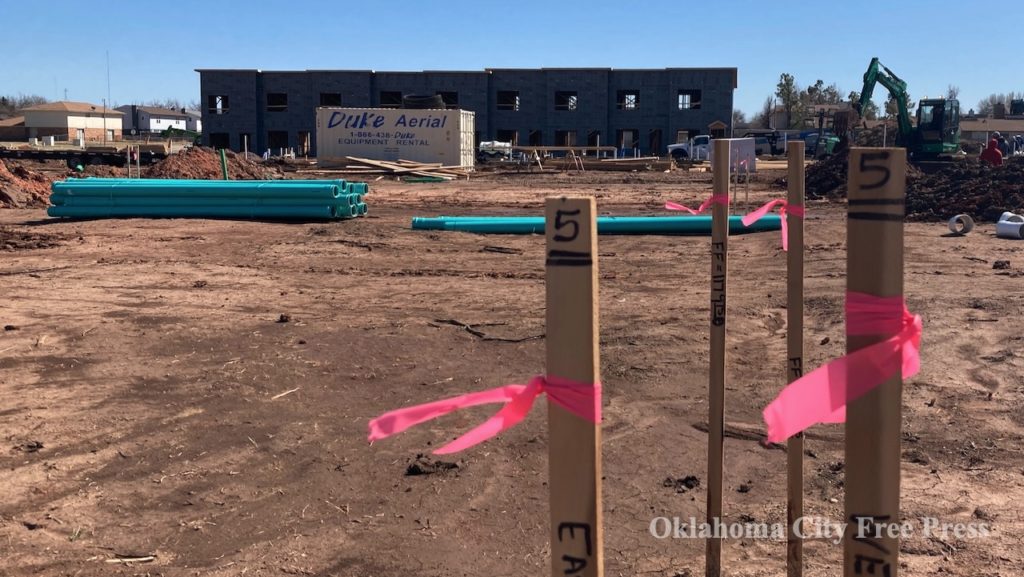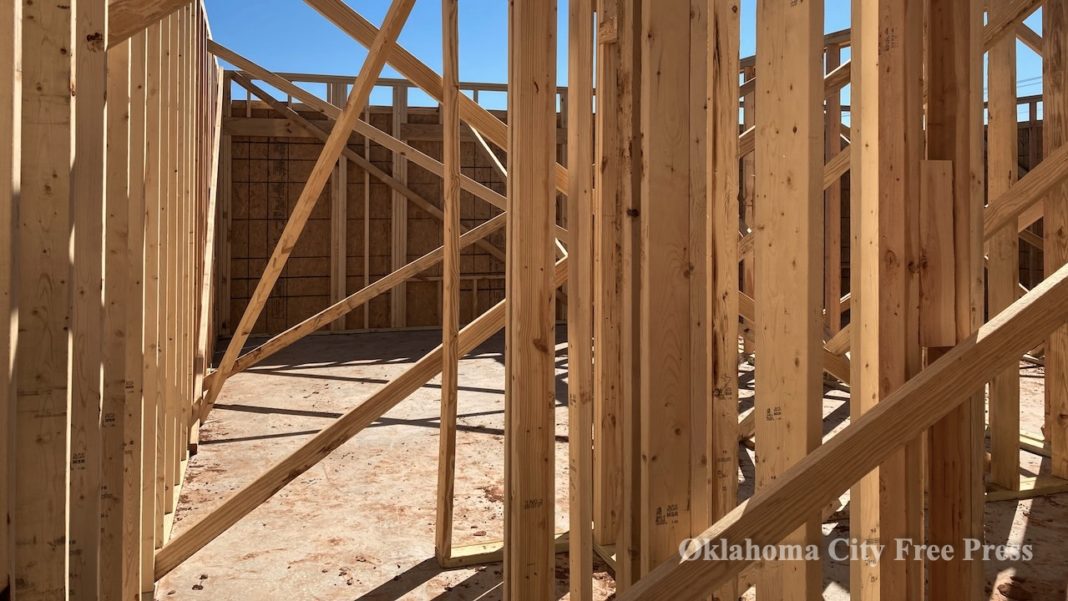Last Updated on August 6, 2023, 2:54 AM | Published: March 26, 2022
This is the second in an ongoing series where we explore the dynamics of the affordable housing crisis in the Oklahoma City metro.
OKLAHOMA CITY (Free Press) — When viewing the ongoing crisis of affordable housing availability in Oklahoma City, it’s easiest to blame developers for not building and offering enough worthwhile, affordable units to meet consistently rising demand.
As the downtown and midtown areas continue to explode with high-end development aimed squarely at young, single professionals, it would appear that housing and apartments intended for low-income individuals and families have been all but abandoned in favor of inflated rents and sky-high investment.
The reality, however, is much more complicated.
Specialized building developers
There is an entire subset of the building developer industry that exists solely to produce affordable housing options that meet both government requirements and community demands, and it’s not a small group. They operate and develop all over the state, some even working across multiple states to design and build affordable units intended explicitly for low-income and fixed-income renters according to state and federal guidelines.
This part of the industry relies heavily on tax credits and government funding subsidies. Most importantly, they rely on the Low Income Housing Tax Credit, a potentially major tax incentive for developers that meet the many criteria laid out for what is called Section 42 housing, units and homes that are deemed affordable and necessary to the community according to Section 42 of the Tax Credit Reform Act of 1986.
Each state has only a certain allotment of LIHTC funds, and with a rapidly increasing demand for affordable housing, the competition among developers for those funds and credits is fierce, spurred even further by an increasingly convoluted and bureaucratic points system.
“There’s only so much funding to go around, and everyone’s fighting to get their piece,” I’m told by developer Lance Windel, CEO of LW Development. “The scoring criteria determines who’s going to win.”
When he talks about “winning,” he means having a new building development project approved and selected for LIHTC funding. With the cost of materials and labor skyrocketing, and costly new elements being regularly added to the list of requirements, building a housing complex or community can be remarkably expensive.
“They decided that every development now has to have a storm shelter,” Windel explained. “Now, yeah, that’s a good idea, but I spent about half a million dollars last year just on storm shelters. How many housing units did I not build because of that?”
Qualified Allocation Plan
For many builders like Windel based around Section 42 housing, completing a new affordability-oriented development would be impossible without tax incentives like the LIHTC.
But with only so much to go around, who decides which projects get funded and which don’t ever even get to break ground?
Enter the Oklahoma Housing Finance Agency and the QAP, or Qualified Allocation Plan, an application process that requires developers of low-income housing to submit detailed plans for any project to be “scored” with a points-based system designed to rank and quantify the need for, and benefit of, the project in the community.
Every detail of the project, from the exact square footage to the intended demographics for future residents to the accessibility and distance of local amenities, is given a predetermined point value. 30% of units in the development have 3 bedrooms? That’s 3 points. Units will be sold to eligible tenants after 15 years? That’s another 10 points. Building materials and components are green and environmentally friendly? Up to 18 points.
Each and every submitted project is scored and ranked, with only the highest-scoring projects being selected for LIHTC status. The thought is that these tax credits should only be awarded to projects and housing units that do the most good for the community and that help the most people possible to get off the streets.
Unfortunately, when a policy’s scores, ranks, and competitions begin to look like a game, eventually people will figure out how to play it.

Race to the Bottom
On Thursday, March 24th, a group of developers and Housing Finance employees from all over the state gathered in OKC for an “open input session” on how to better modify and tweak the current QAP in order to address many of the issues that builders are claiming have kept them from producing the kind of solid, widespread affordable housing that the state needs.
The points, many said, are all wrong, and they’re boxing developers into no other choice than to build the smallest, cheapest, lowest-quality housing possible.
Chief among these issues is the provision that points can be scored on the QAP according to how few LIHTCs are used per unit. The fewer credits being applied per unit, the more points your application can score. The same goes for developments with the highest number of qualifying units.
This has created what many are calling the “race to the bottom,” with low-income housing developers realizing that the best way to score the most points and get their projects funded is to design only the smallest units, built as cheaply as possible, and then still charge the maximum allowable rent for the units once completed.
“The problem created by that criteria is this thinking that ‘if I’m going to beat everyone else, I’m going to build nothing but 250 square foot studios,’” Windel said, “because it’s ‘credit per unit,’ so the cheapest and smallest thing you can build, that’s going to win that funding. Otherwise, your project doesn’t get the credit.”
According to Windel, that’s led to towns all over the state seeing an increase in cheap, cramped housing developments that would be of little use to struggling families.
“That’s not what any town needs,” he said. “We weren’t thinking about what the needs were, we just thought ‘this is a good criteria.’”
Housing Study Needed
That sentiment that “we weren’t thinking about what the needs were” is one that came up again and again from developers throughout the session.
Housing needs are dramatically different all over the state, with some areas in desperate need of affordable rural options, some badly needing elderly housing, and many areas in need of better family-oriented units. As the housing crisis wears on, the need for affordable housing has spread across nearly all demographics in ways not seen in decades.
Unfortunately, there is currently no study or data to show the individual needs within isolated communities and areas. The low-income housing data that things like QAP points are based on is mostly pulled from all-encompassing, statewide numbers, or generalized market research.
Without a more analytical and closer-looking housing study, there’s no real way to tell if a low-income housing development is actually serving the community in which it’s being built.
Representatives from the Housing Finance Agency claim that such a study is currently underway, but can’t say when it will be completed or how its findings might be implemented into the QAP and points system later.
Random Option
With new stipulations and points being added to the QAP every year, the likelihood of scoring high enough to win a tax credit is becoming increasingly slim for many low-income housing developers.
Some, like Windel, are looking for more extreme changes to the process.
“I sat down one weekend and said ‘well, if I was the Chairman of the Board, here’s what I would tell staff to do to get the right units,’” he told me, standing outside one of his new OKC townhome developments, still under construction, that will be made available for low-income families.
“I literally thought about it for a day and a half,” he said,” and I was like ‘why can I say that a three-story walkup apartment complex is better than single-family homes in Guymon? Why can I say that an elderly subdivision in Claremore is better than this right here?’ I couldn’t come up with an answer to say what was more important.”
What he would like to see, then, is a totally random option for selecting which developments get funded and where.
“We’re all good developers. We all want to do what’s best for the community,” he told the session. “Just pull our applications out of a hat and let us build the right units the right way.”
Brett Fieldcamp has been covering arts, entertainment, news, housing, and culture in Oklahoma for nearly 15 years, writing for several local and state publications. He’s also a musician and songwriter and holds a certification as Specialist of Spirits from The Society of Wine Educators.











